The new Hoka Trail Code GTX may be the Hoka we've been waiting for!? New for 2023, the Trail Code is lighter and more cushioned than the Hoka Anacapa Mid GTX, potentially making it Hoka's best hiking boot for day hikes. My early review of the new Hoka Trail Code GTX offers my thoughts on its support, weight, comfort, fit, traction, weather protection, and overall value. I reserve the right to change my mind, but this new hiking boot is rapidly becoming my favorite Hoka for hikers.
Meet the new Hoka Trail Code GTX
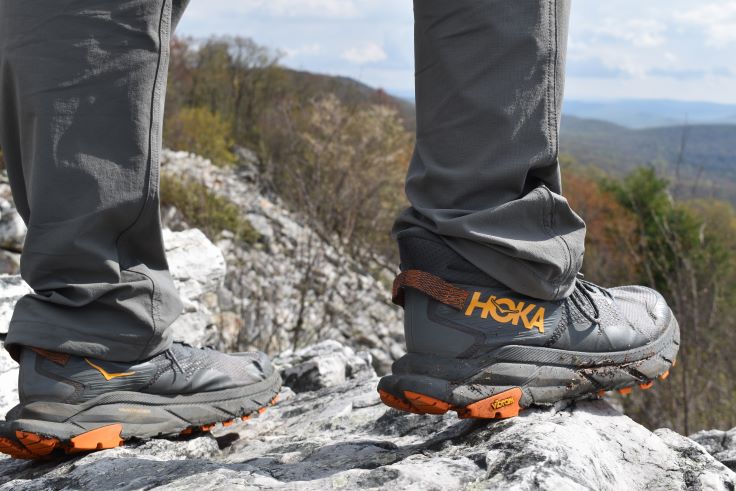
testing the new Hoka Trail Code GTX on Pennsylvania's Mid-State Trail
Hoka rules the "max cushion" niche with trail running shoes and hiking boots that feature minimum weight and maximum cushion. Among Hoka hiking boots, the Kaha 2 has been the brand's best backpacking boot, and the Anacapa has been their best day hiking boot. But the Anacapa may have competition for the title of best Hoka hiking boot for day hikers—the Hoka Trail Code GTX.
The new Hoka Trail Code GTX is a lightweight day hiking boot. It's packed with premium components and recycled materials for a more environmentally responsible build. Hoka designed the Trail Code GTX for men and women who wanted a light hiker with a more sneaker-like look and feel. It's lighter and softer underfoot than than the popular Anacapa Mid GTX. That means it will appeal to many Hoka fans, fast-and-light hikers, and casual hikers who want a light and cushy hiking boot. This GORE-TEX hiking boot has a MSRP of $185:
This post includes affiliate links, including the links above. If you click on these links and make a purchase, the retailer may share a small percentage of the sale with Hiking Feet at no cost to you. You can support this site's free and independent reviews by purchasing your footwear through these links.
Hoka Trail Code GTX Review
My Hoka Trail Code GTX review is based on a bunch of day hikes that I hand-picked to test the boot's support, comfort, weather protection, traction, and more. These took place in Pennsylvania in March and April, 2023, shortly after the Trail Code was released. (Disclosure: I won these boots in a raffle for outdoor industry pros who attended optional training on hiking footwear technology sponsored by GORE-TEX.) As always, this is an independent review (not a sponsored post) based on my personal experience wearing and testing the new Trail Code GTX. I'll continuously update this review if I discover additional strengths or limitations of this brand-new hiking boot.
As of right now, I'm adding the Hoka Trail Code GTX to my list of the best lightweight hiking boots. Here's why it's tentatively emerged as my favorite Hoka hiking boot:
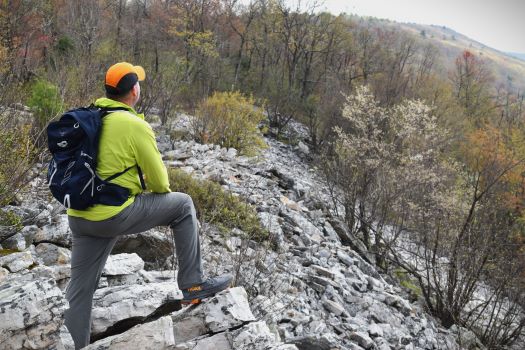
Support
LIGHT
As a brand, Hoka stresses weight savings and cushioning over support. Their trail running shoes and hiking boots don't have the stiff soles or mid-foot shanks of traditional hikers. Even so, Hoka's midsole cushioning is so thick that it actually adds some foot support and torsional rigidity for some ankle stability.
That's also true of the Trail Code. If you value foot and ankle support more than anything else, this isn't your hiking boot. Its light, over-the-ankle build isn't much different from a low-cut hiking shoe. Still, there's enough support here for most day hikers. I've walked away from several moderate to difficult day hikes with relatively fresh feet. And I haven't rolled an ankle, even on tough trails like the Mid-State Trail (pictured on the left) that are packed with rocks, roots, and awkward steps.
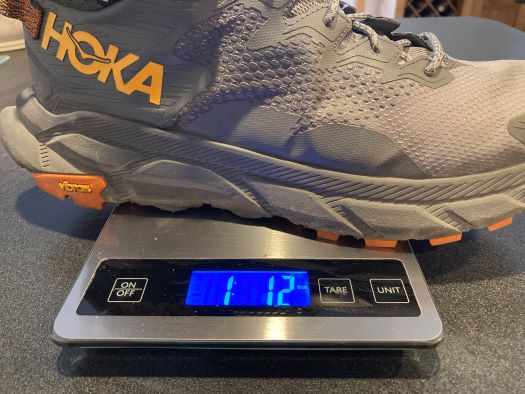
Weight
LIGHTWEIGHT
The Hoka Trail Code GTX is one of the lightest hiking boots I've worn, weighing 2 pounds and 2 ounces per pair (which is very light for a men's size 12). (The women's Trail Code starts around 1lb 10 oz per pair.) That's significantly lighter than the average hiking boot, which weigh between 2.5 and 3lbs (men). If you prefer a lightweight hiking boot to a more supportive one, the Hoka Trail Code GTX should be on your short list. It'll soon be added to my life of the best lightweight hiking boots.

Fit
STANDARD TO ROOMY
Hokas run true to size with three different lasts of varying widths. The Hoka Trail Code GTX is built around the brand's middle last, which runs a little roomier than the average hiking shoe. That leaves a little more room in the forefoot and toe box for your toes to splay naturally. It's similar in fit to the Hoka Speedgoat (the best selling trail shoe in the US) and Hoka Sky Kaha 2 (Hoka's best backpacking boot).
This fit favors hikers with average to wide feet (not narrow feet). Hikers with wide feet may like it, or they may need to size up extra to get enough width. My feet are moderately wide, and these fit me fairly well in my normal hiking size.
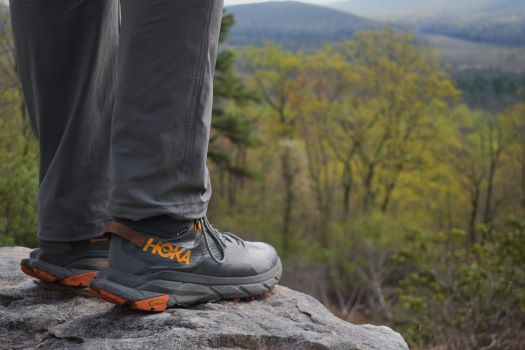
Comfort
ABOVE AVERAGE
Finally, this is the feel that I've been wanting from a Hoka hiking boot. For me, the Trail Code feels cushier than the Hoka Anacapa Mid—and I don't get the Achilles soreness in the Trail Code that I get when wearing the Anacapa Mid or Kaha 2 Mid. Its overall build just feels better, too, with each element of the boot working together better than the Anacapa (for my feet at least). Over miles of tough terrain, my feet have felt like they're walking on marshmallows or mini-mattresses. As much as I like the Hoka Speedgoat trail running shoe, I think I slightly prefer the feel of the new Trail Code for hiking. If you're looking for a lightweight hiking boot with a ton of cushion, I can't think of a better hiking boot than the Hoka Trail Code GTX.

Weather Protection
ABOVE AVERAGE
The Hoka Trail Code features GORE-TEX waterproofing. It's been around forever, but GORE still makes the most reliable and breathable waterproof membranes on the market. I tested the waterproofing on the Moss-Hanne trail— an 11-mile slog through swamps, blueberry bogs, puddles, run-off water, and ankle-deep mud—and walked away with dry feet after 3-4 hours of sloppy and splashy steps through marshes and woods. The waterproof membrane inside of the boot doesn't extend to the top of the ankle collar, but it provides taller weather protection than a low-cut shoe. The breathability is pretty good, too, given the boot's lightweight build, design features, and breathable mesh uppers.
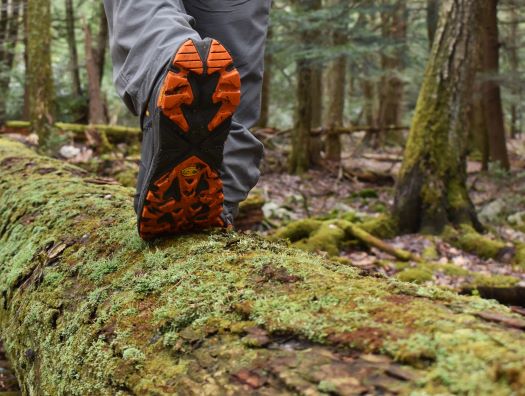
Traction
VIBRAM MEGA GRIP RUBBER
The Hoka Trail Code GTX uses Vibram Mega Grip rubber, arguably the best rubber compound in the outdoor industry for wet and dry traction. This specific Vibram outsole blends softer rubber for rock traction with some deeper, chevron-shaped lugs for traction on dirt, mud, scree, and snow. The extended heel supposedly adds stability on landing, especially on steep descents.
The footing on my local trails is often treacherous, but I've been impressed with these soles. Yesterday, I quickly rock-hopped across a few acres of rough talus fields and then sped down a dodgy scree shoot covered in damp leaf litter—sometimes at a half-jog—while hikers heading uphill (which is much easier) complained about the slick footing on that steep section. It's good tread and versatile tread (which is why many premium hiking boots and hiking shoes choose this specific Vibram outsole).
This is one of my favorite outsoles—and another clear plus for the new Trail Code GTX.
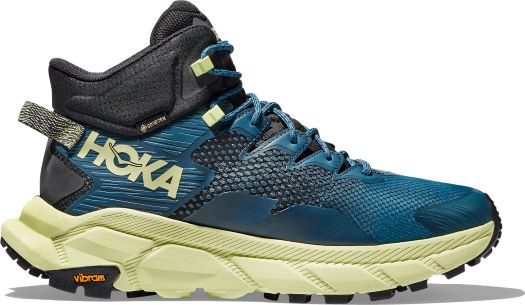
Value
AVERAGE
Hoka set the initial price of the Trail Code GTX at $185. For that money, you get premium (GORE-TEX) waterproofing and (Vibram) traction and possibly the cushiest ride on the market. Compared to other lightweight hiking boots I recommend, that's the same price as the Hoka Anacapa Mid, five dollars more than the waterproof Topo Trailventure 2, and $15 more than the Salomon X Ultra. It's priced well below the MSRP for La Sportiva's Ultra Raptor II GTX Mid ($209) and Nucleo II High GTX ($239). Overall, that's a fair price, not a great price for a high-performance, lightweight hiking boot.
Hoka Trail Code: Pros vs Cons
The best hiking boot for you is the one that best fits your feet and best matches your hikes. To help you figure out if the new Hoka Trail Code GTX is your best fit and best match, here's a quick overview of the boot's pros and cons:
Overall Recommendation:
Hoka delivered with the new Trail Code GTX. Like all Hokas, it stands out for its maximum cushion at a minimum weight. It's not only cushy AF, but also performance-oriented with excellent traction and all-weather protection. For me, it's a more comfortable hiking boot than the Hoka Anacapa Mid GTX—and, thus, my new pick for Hoka's best day hiking boot.
The Hoka Trail Code GTX is a good hiking boot for casual hikers and fast-and-light hikers who crave as much cushioning as possible. Most lightweights skimp on cushion to cut weight— not the Trail Code. If it fits you and matches your hiking style, the Hoka Trail Code is one of the best lightweight hiking boots. It's neck and neck with the Speedgoat as my favorite Hoka.
If you are interested in Hoka's newest hiking boot, please consider purchasing your pair through the affiliate links above. That doesn't cost you anything, but it may send a small commission my way to cover my costs—and give me a little back for the hundreds of unpaid hours I've spent writing free content to help men and women buy the right hiking boots, hiking shoes, or trail running shoes for their hikes. If this post hooked you up, please consider hooking me up, too!
Thanks—and happy hiking!
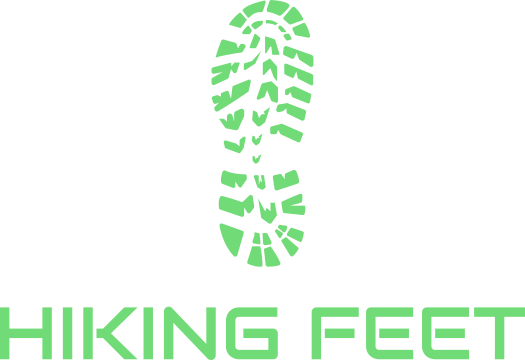
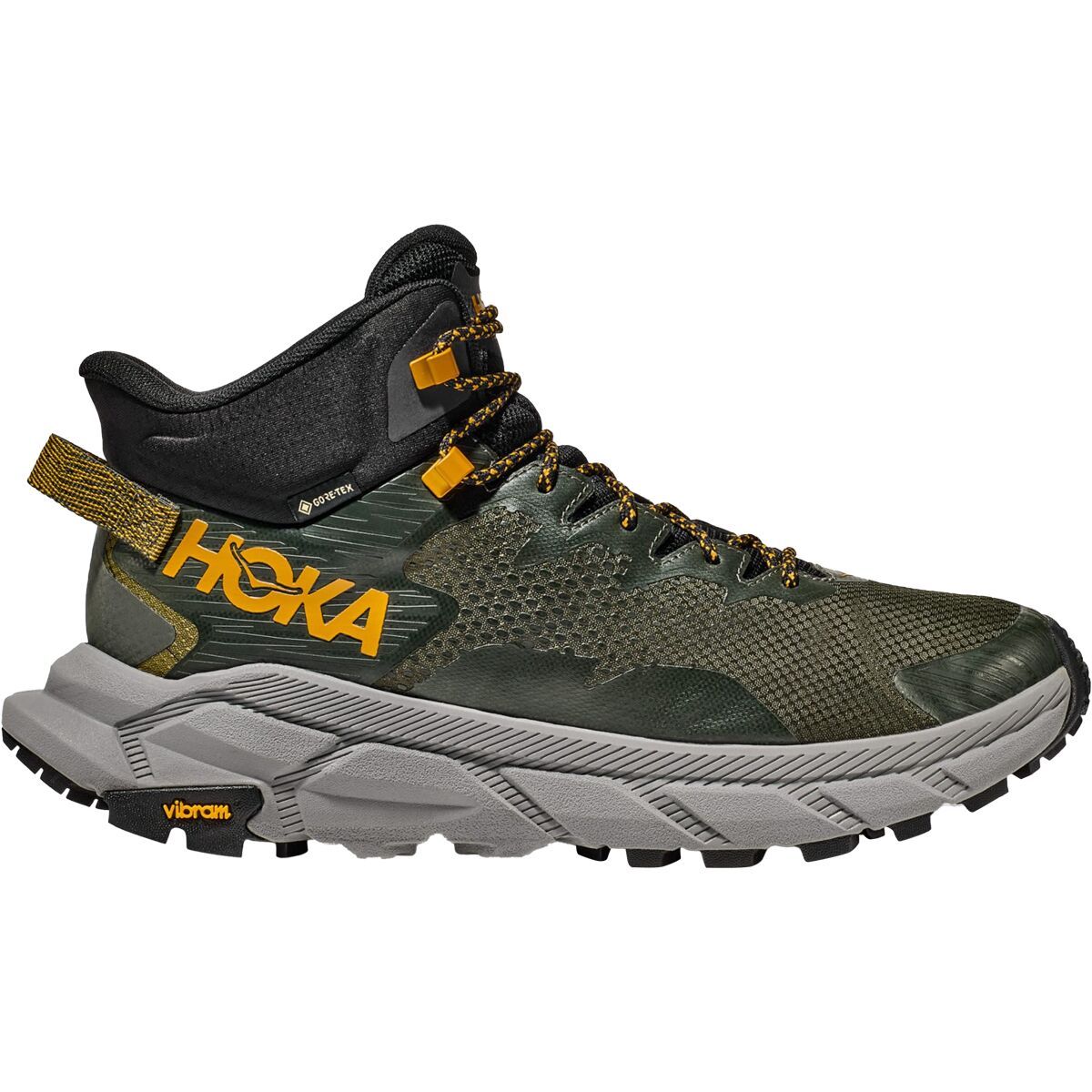
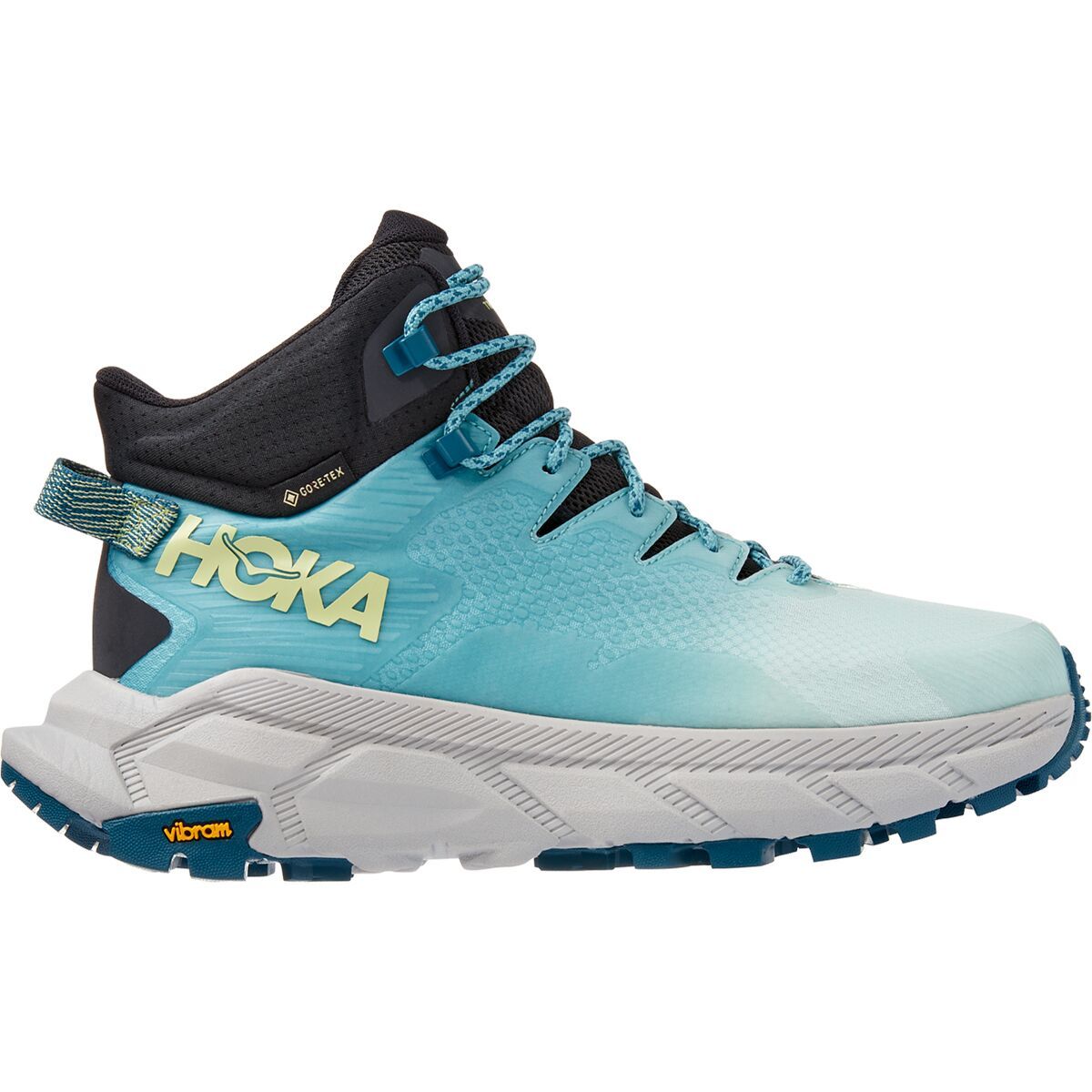
I'm testing right now Hoka trail code GTX and adidas terrex free hiker 2 GTX. Adidas has more cushion underfoot than hoka, but its build quality and upper comfort are inferior to the hokas. I'll probably keep the Hokas for the overall value, but for those that want max cushion under their feet, adidas is the go to.
Thanks for your comment, Florin. I’ve also been wearing the TERREX Free Hiker 2 for the past two months–including wearing it as my travel shoe in Ireland the past ten days–and my full review will be coming on this website in another week or two. You’re right that the Free Hiker is also super soft underfoot, thanks to adidas’s Boost cushion. If you’re between those two, the other big difference would be traction–with the Hoka Trail Code GTX having better traction for rocks and moderately difficult terrain. Their fits are also fairly different.